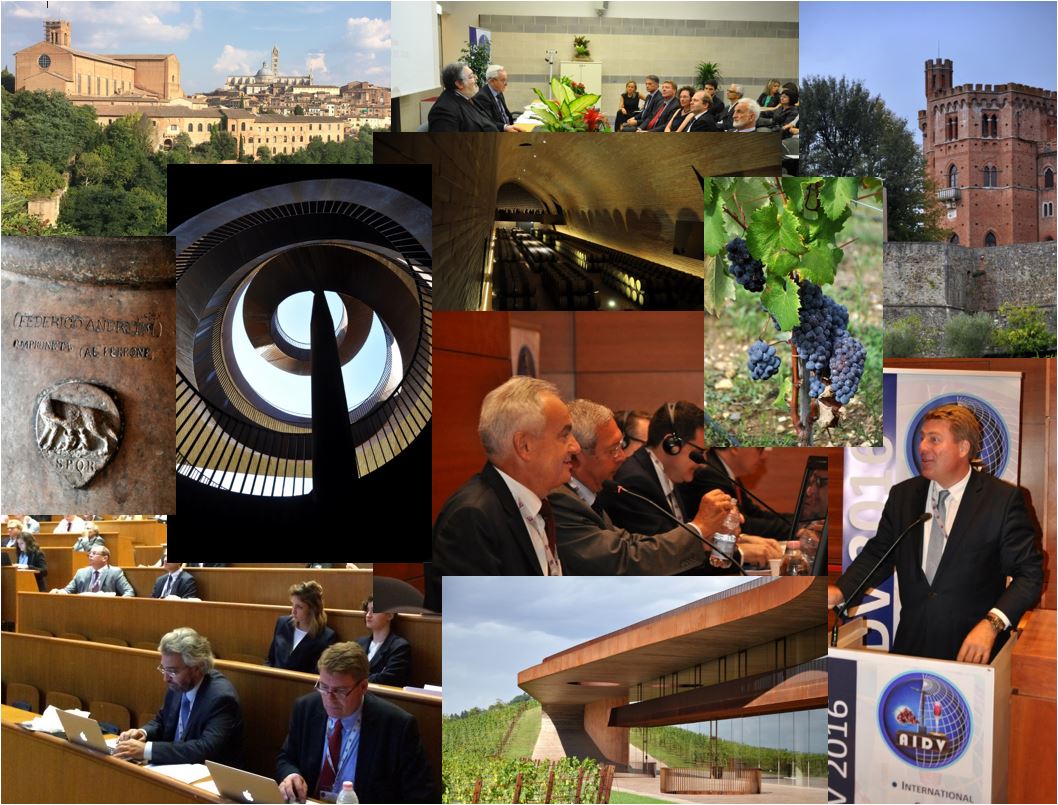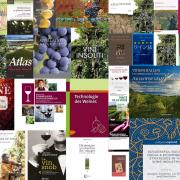
« Form_Inscription_Livre_Book_JdP_2017.pdf »: paper printed books and .pdf format (in the 10 categories) [FR / EN]
« Form_Inscription_numeric_JdP_2017.pdf »: interactive digital format only in the first five categories : 1-Viticulture, 2-Œnology, 3-Vitivinicultural Economy and Law, 4-History, Literature and Fine Arts, 5-Wine and Health [FR / EN]
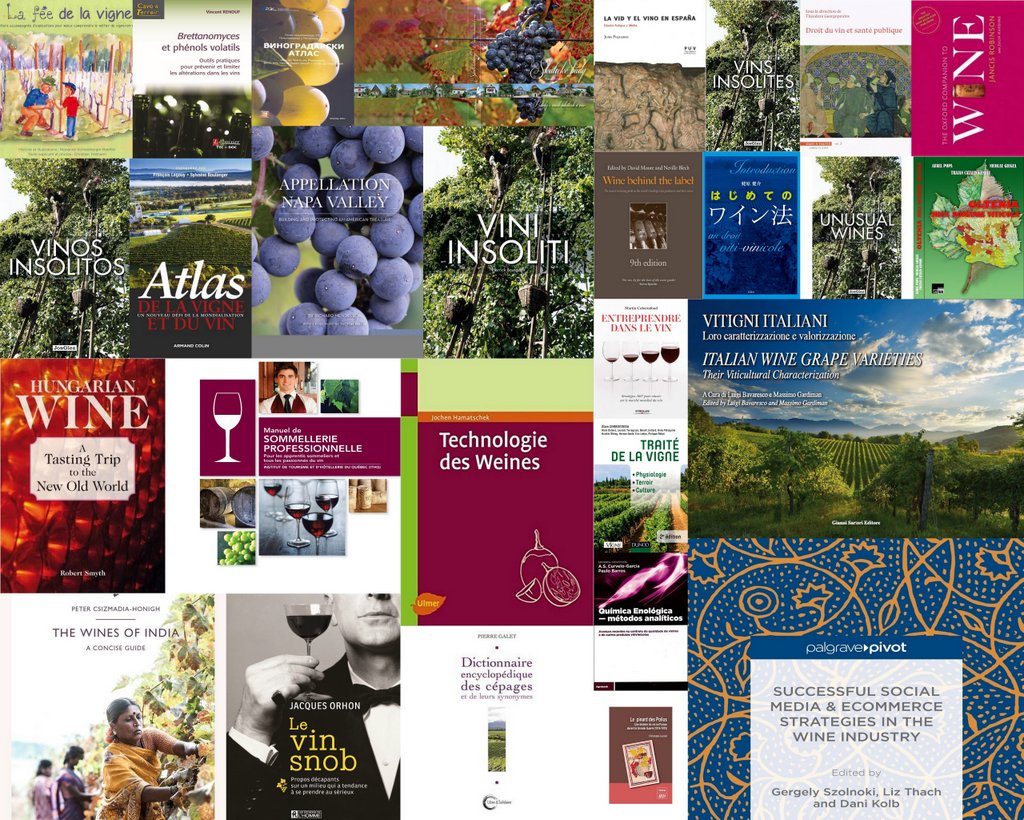
Rubric OIV Awards

This exhibition brought together representatives for 2000 exhibitors (700 of which were foreign) and hosted over 10 000 visitors.
During a conference organised as part of the exhibition, Jean-Marie Aurand gave a panorama of the state of the global vitivinicultural sector, highlighting the major development trends and main issues for the future, as well as the role of the OIV in this context.
At this event, the OIV Director General also partook in several meetings with representatives for the Chinese authorities, namely the Vice-Governor of Guizhou Province and the Chinese Vice-Minister for Commerce, with whom he brought up the prospects for the accession of China to the OIV.
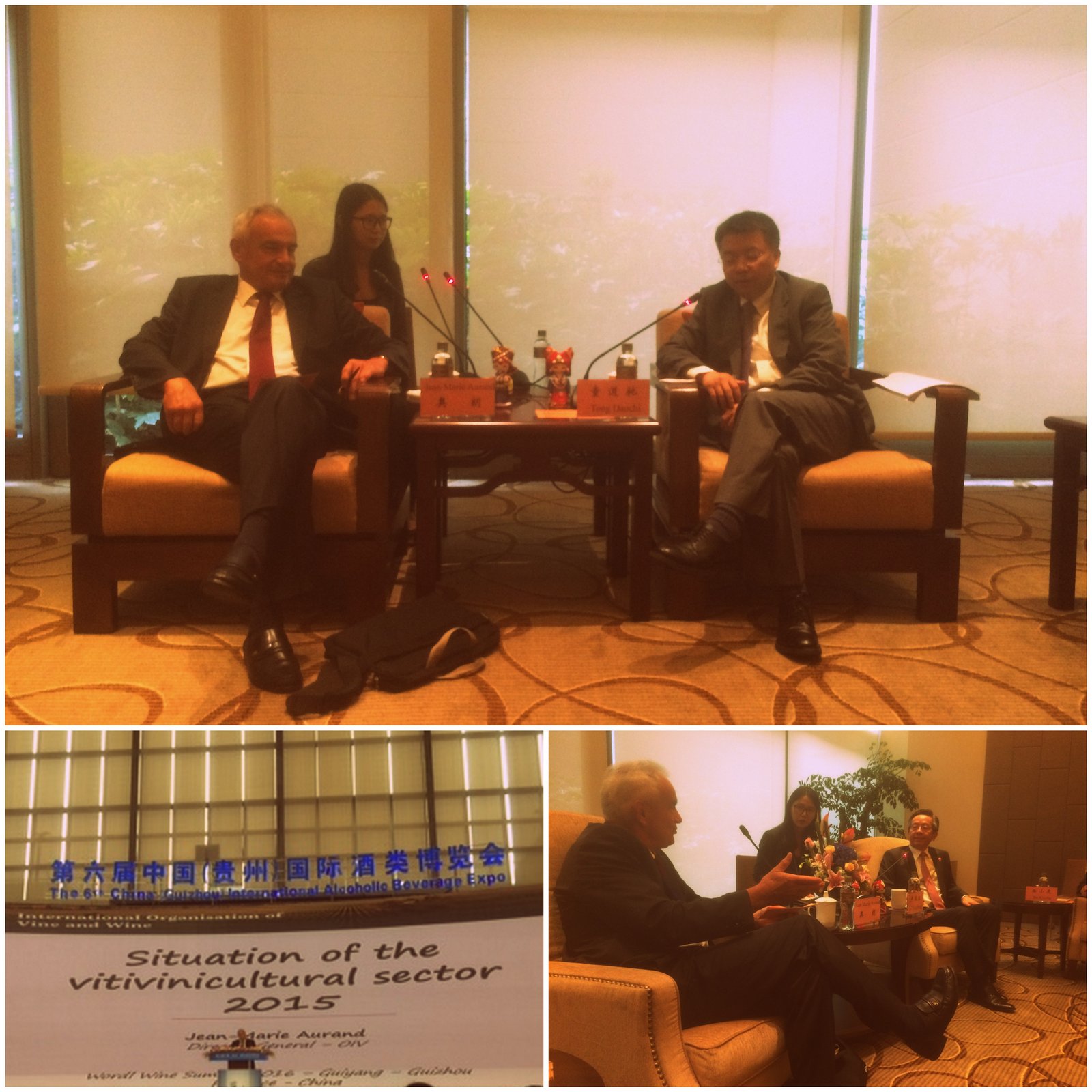
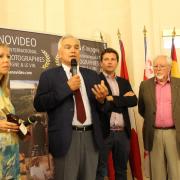
Under the patronage of the OIV, each year this festival recognises the best films and photographs relating to vines. Among the award winners of the 23rd festival, which took place at the end of May in Frontignan, are French, together with Canadian, Georgian and Slovenian productions. On the photographs side, the major winners of the 11th Terroir d'Images exhibition, which took place at the same time as the festival, were presented during this ceremony. See the Terroir d’Images Winners.
The presentation of awards was also the moment for the handover from the town of Frontignan to the Cité du Vin (City of Wine) of Bordeaux, where the next festival will be held in 2017.
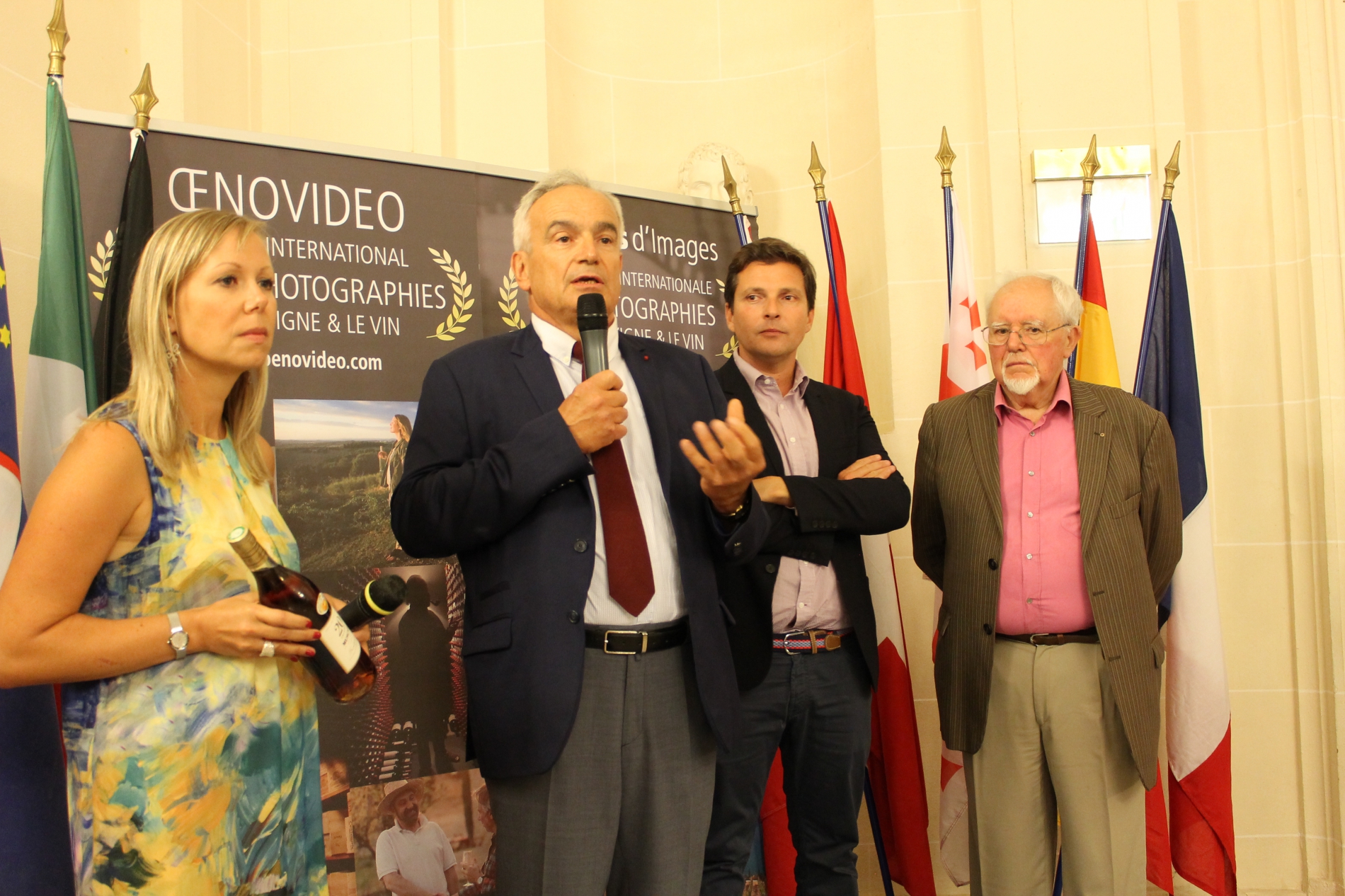
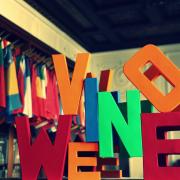
To attend this press conference, journalists are kindly asked to send an email with their name and their professional contact details to press@oiv.int.
Date: Thursday 20 October 2016
Time: 11am
Location: International Organisation of Vine and Wine, (OIV), 18 Rue d'Aguesseau, Paris 75008 - Metro station Madeleine or Concorde [see map]
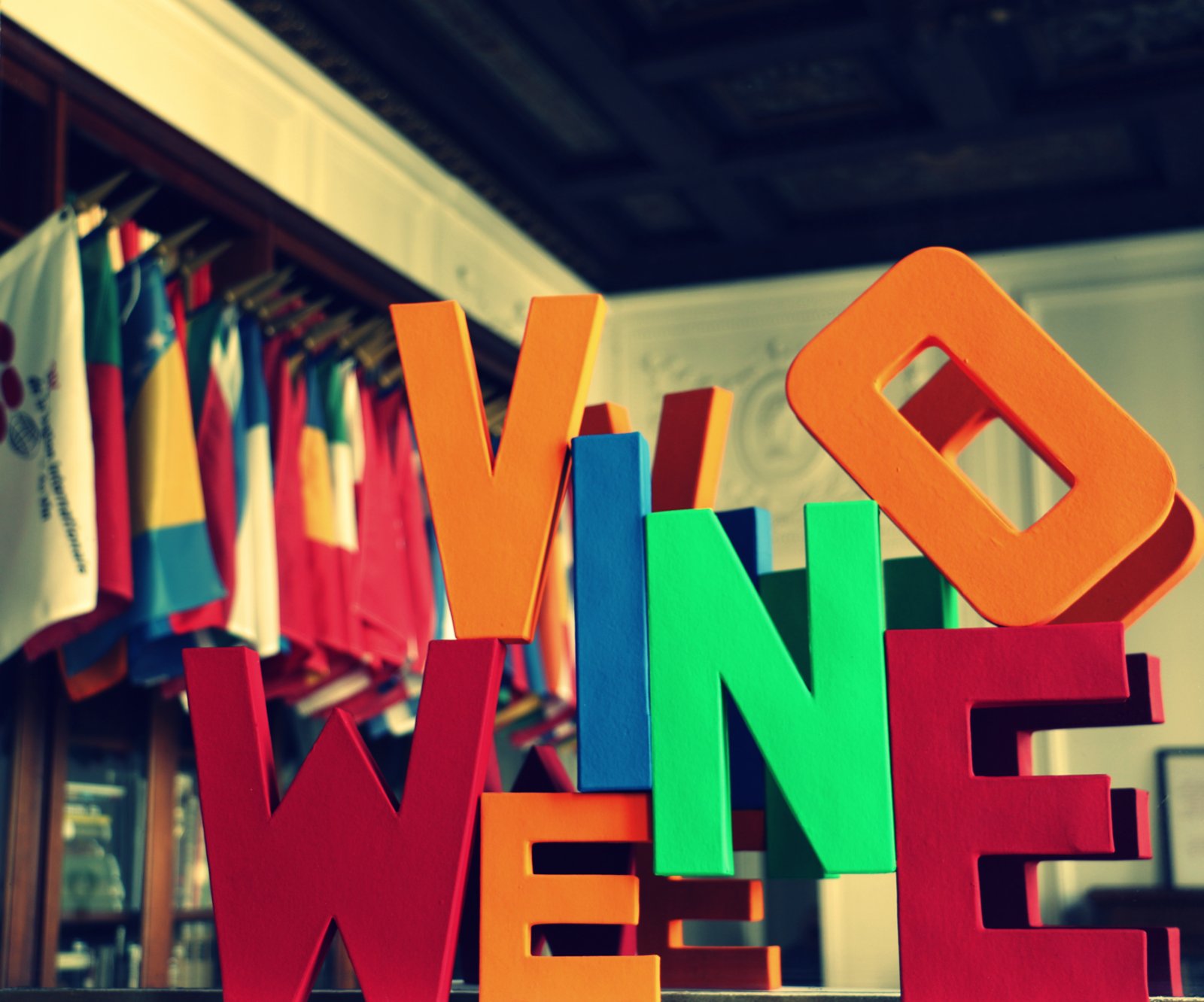

On 24 September 1716, the Grand Duke of Tuscany Cosimo de' Medici issued an edict legally defining the boundaries of the Chianti region for the first time. In Tuscany, 3 centuries later, over 150 specialists in wine law from 5 continents participated in the 34th international conference of the International Wine Law Association (AIDV) on the theme of 'Legal tools for the protection of local wineries in a global market'.
From the opening of these two days of discussions and debates, the Director General of the OIV recalled the figures indicative of the globalisation of the wine world, in which over 2 bottles of wine out of 5 have crossed a border before being consumed – which equates to more than 100 million hectolitres out of 270 million hectolitres of products in the world. Jean-Marie Aurand praised the activity and network of the AIDV in 30 or so countries, which provides a major intellectual contribution to the work of the OIV through its observer status. Among the participants in the Conference, Mr Aurand expressed his appreciation to three law professors, the winners of 3 OIV Awards in 2016: Richard Mendelson, Kensuké Ebihara and Théodore Georgopoulos.
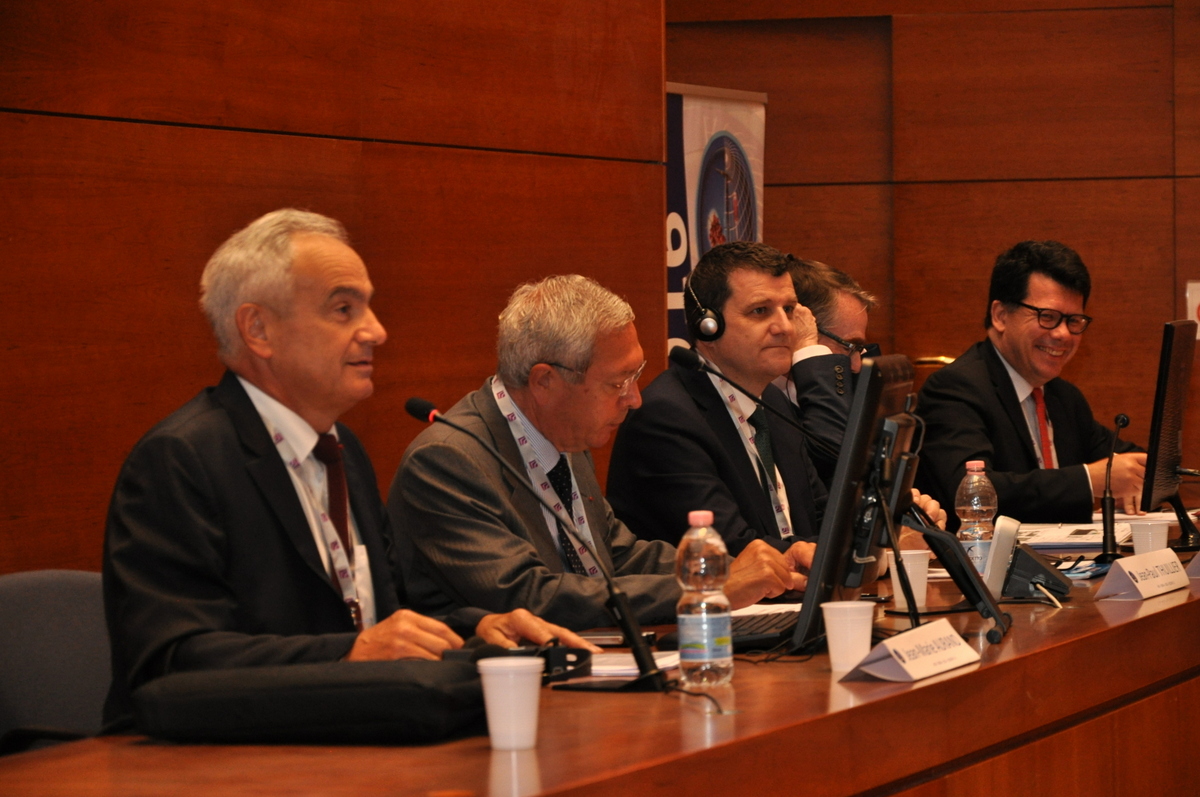
Jean-Marie Aurand – OIV Director General,
Jean-Paul Thuillier – Permanent Representative of FRANCE to the WTO,
John Barker – Lawyer- Consultant in New Zealand, Tom LaFaille – Vice President of the Californian Wine Institute, Nicolas Ozanam – General delegate for the French Federation of Exporters of Wines & Spirits.
Various sessions dealt with the 'big regional agreements' and their impact on the wine trade; restrictions on trade in the wine market; buying and selling wine businesses: unexpected barriers and hurdles; public and private dispute settlement in the wine sector; the funding, makeup and role of various producer groups; geographical indications and the 'average consumer'; or even hardly-known tools in the wine sector such as plant breeders' rights or the protection of oenological practices. During these sessions, the lawyers, magistrates, professors and professionals present repeatedly insisted on the specific characteristics linked to the territoriality of wine, which makes it possible to maintain, even develop the local approach in a globalised world.
From Vienna, Austria – where he was elected – to Siena, Italy – where he finished his term – the AIDV President and Dutch lawyer Rein-Jan Prins dynamised the AIDV, which, with almost 350 legal experts, is the largest forum for comparative studies and debates in the field of vitivinicultural law. The grand surroundings of the city of Siena and its University set the scene for very high-level debates, punctuated by the discovery of the gems of Tuscany thanks to tastings masterfully organised by the Enoteca Italiana, the Consorzio Vino Chianti Classico and the Consorzio Vernaccia di San Gimignano.
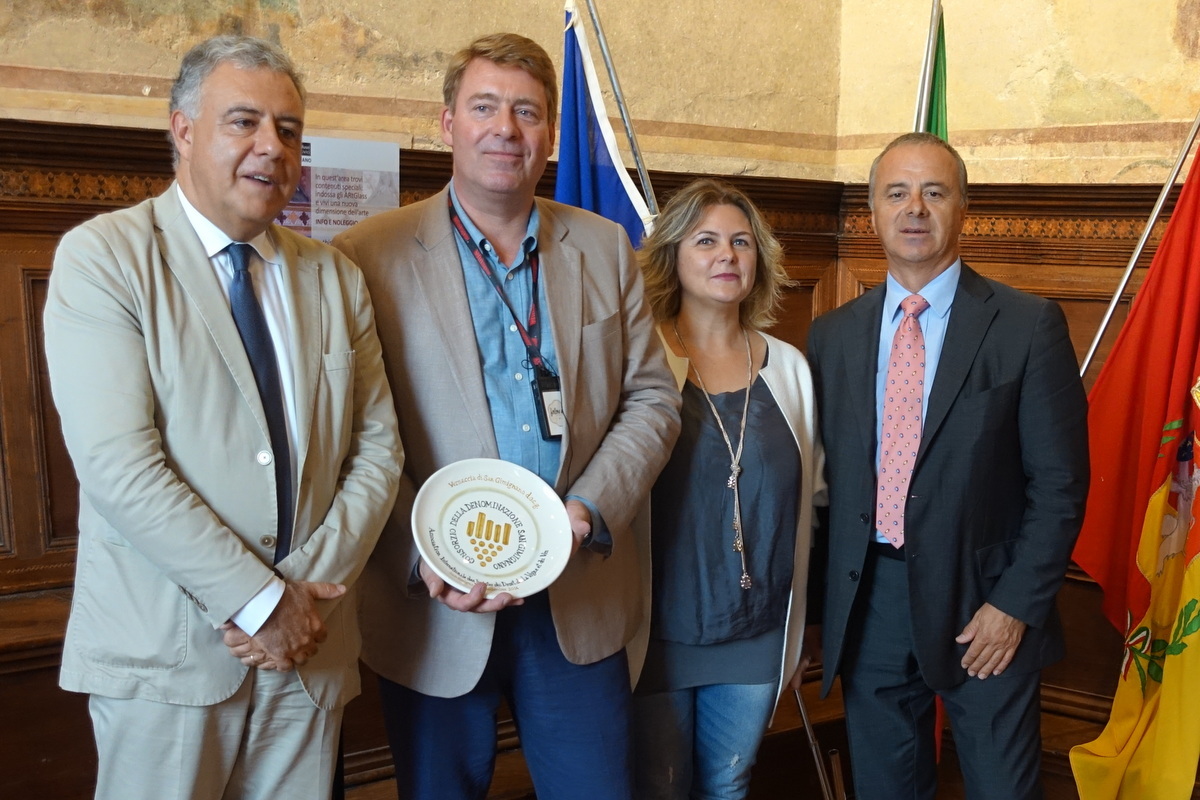
Giacomo Bassi, Mayor of San Gimignano; Rein-Jan Prins, AIDV President; Letizia Cesani, President of the Consorzio; Stefano Campatelli, Director of the Consorzio
The AIDV President stressed the importance for legal experts in wine, whether they came from a thousand-year-old wine-producing country or a newer one, to confront the reality of territories formed through the economic activity of the wine trade. From the Ricasoli family's Castello di Brolio, a multi-century cradle of Chianti, to Cantina Antinori, a masterpiece of contemporary architecture, Rein-Jan Prins saluted these three centuries, which perfectly illustrate the theme of the AIDV Conference, or how a local, geographically-limited product has been able to forge an international reputation and global market.
